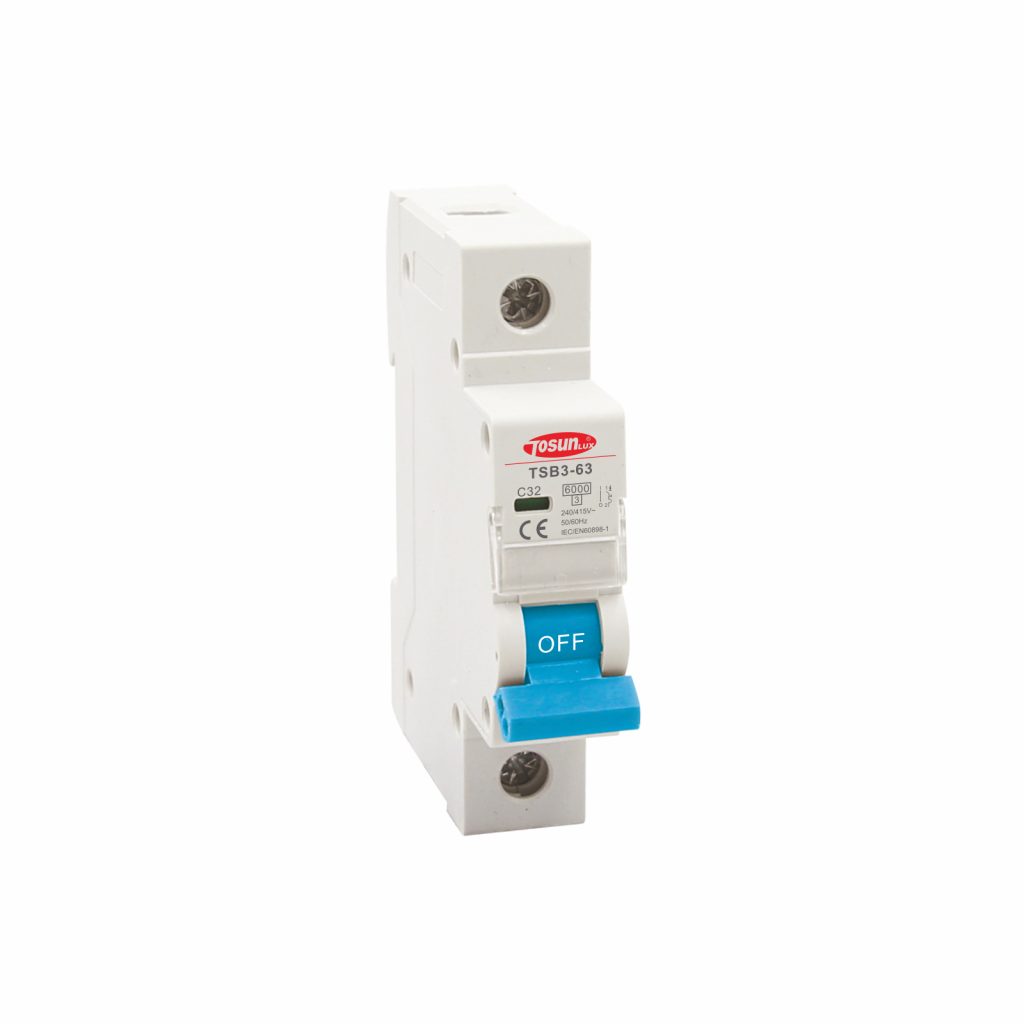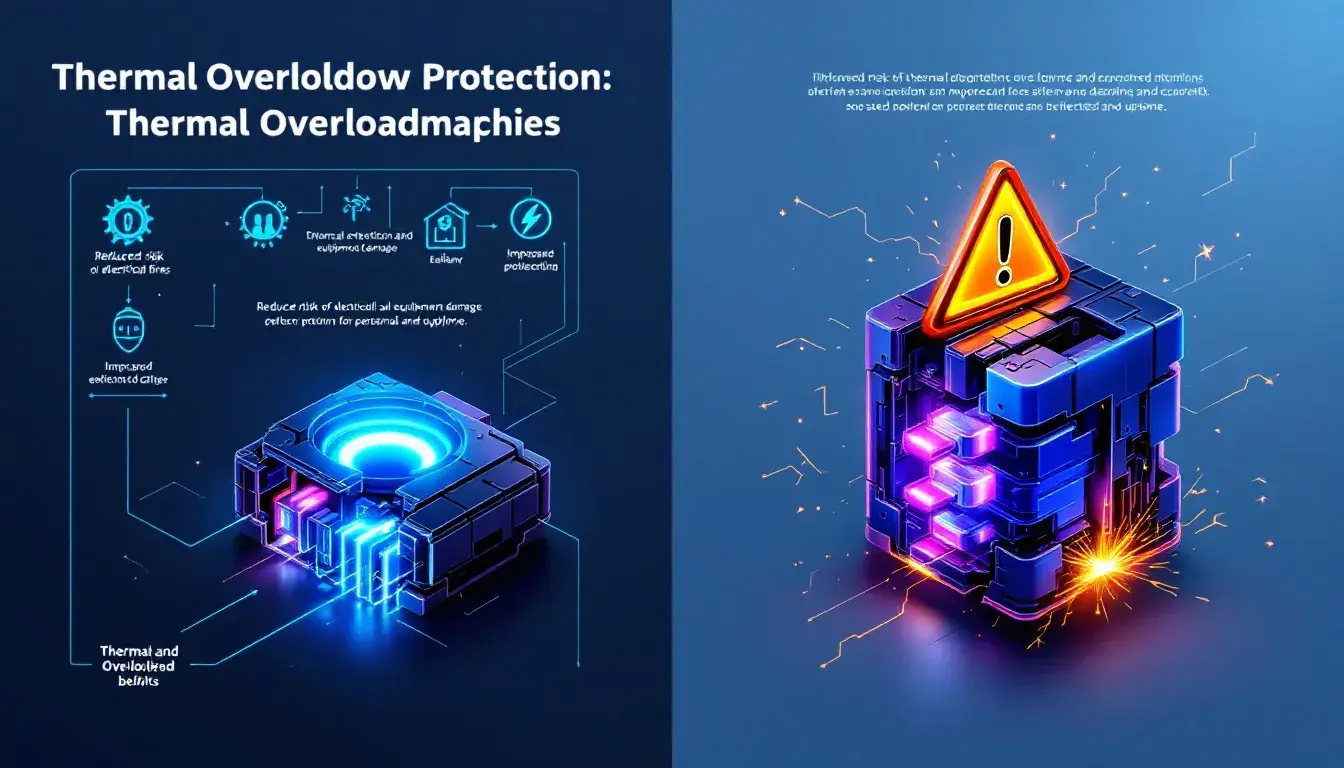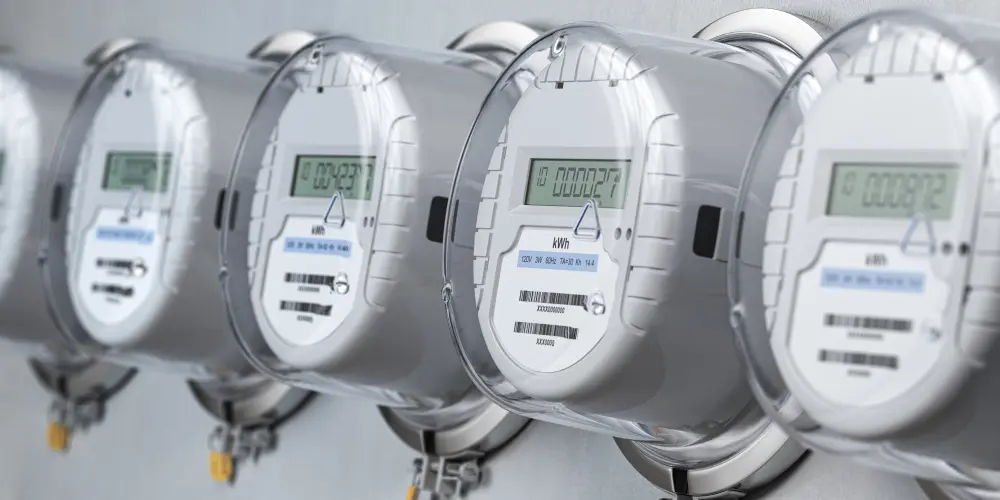How to Select Suitable DC Breakers ?
Table of Contents
ToggleDid you know that selecting the right DC circuit breaker can prevent up to 80% of electrical mishaps in your home or business? In this article, we delve into the world of DC breakers, essential for safeguarding your electrical systems. You’ll learn about the different types of DC circuit breakers, their key features, and why proper sizing is crucial.
We will guide you through the factors to consider when choosing a breaker, including ambient temperature and load capacity. Whether you’re a homeowner or an industry professional, this guide will equip you with the knowledge to make informed decisions, ensuring safety and efficiency in your electrical installations. Read on to become an expert in selecting suitable DC breakers!
What is a DC Circuit Breaker?


A DC MCB, or Direct Current Miniature Circuit Breaker, is a small device that helps protect electrical circuits. As a type of circuit breaker, it works by stopping the flow of electricity when the current gets too high, preventing damage to appliances and reducing the risk of electrical fires. Circuit breakers also help prevent electric shock, ensuring system safety and protection.
Key Features of DC MCBs:
- Rated Current: This is the maximum current the MCB can handle safely. For example, a DC MCB with a rated current of 20 amps can manage up to 20 amps without tripping. The rated current is specified at a certain ambient temperature, and performance can vary if the MCB operates outside of this temperature range.
- Breaking Capacity: This refers to the highest current the MCB can interrupt safely. Residential DC MCBs often have a breaking capacity of up to 6,000 amperes (6 kA), while industrial ones can handle even more. It is crucial to select a circuit breaker rated appropriately for the specific application to ensure safety and compliance with regulatory standards.
- Types: DC MCBs come in two main types:
- AC MCBs: Used for power generation and solar installations.
- DC MCBs: Found in vehicles and some home circuits.
- Operation: They can be manually turned on and off or operate automatically if the current exceeds safe levels.
- Molded Case Circuit Breakers: Molded case circuit breakers (MCCBs) are designed to handle higher current ratings and are calibrated to carry specific amperes at certain temperatures. Proper maintenance and UL testing are essential to ensure their reliability and extend their lifespan.
Why Use a DC MCB? Protection Against Short Circuit
- Safety: Protects against electrical overloads and short circuits, including continuous load conditions to prevent damage during fault conditions.
- Reliability: Ensures your appliances work smoothly without unexpected interruptions.
- Versatility: Suitable for both residential and industrial applications.
- Compliance: When selecting DC MCBs, it is crucial to consider continuous loads. For loads lasting three hours or more, circuit breakers should be sized to handle only 80% of their rated capacity, as per NEC guidelines, to ensure safety and prevent overheating.
Factors to Consider When Choosing a DC MCB: Ambient Temperature
When selecting a DC miniature circuit breaker (MCB), it’s important to ensure safety and efficiency in your electrical systems. Here are some key factors to consider:
- Type of Circuit: Determine whether your circuit is for a vehicle, a solar system, or a DC circuit. DC MCBs are commonly used in all these applications. Additionally, consider the specific parameters for dc circuits to ensure accurate breaker sizing.
- Rated Current: Match the MCB to the maximum load your circuit can handle. For example, if your circuit carries up to 20 amps, choose an MCB rated for at least 20 amps. Remember, the safe maximum load for a 15A circuit breaker is 12A, adhering to the 80% rule to prevent potential power loss.
- Breaking Capacity: This is the maximum current the MCB can safely interrupt. Residential DC MCBs typically have a breaking capacity of up to 6 kA, while industrial ones may be higher.
- Impedance Consideration: If your power source has high impedance, select an MCB with a lower short circuit capacity to prevent damage.
- Amperage Rating (AIC): Ensure the MCB’s amperage rating aligns with the circuit’s maximum current to avoid over-current issues. Consider the power factor when calculating the appropriate breaker size for various appliances.
- Temperature Rating: Most MCBs have a standard temperature rating of 40°C. Make sure your MCB can handle continuous current at this temperature. For a single phase AC circuit, consider the load types and power factors. When dealing with a single phase supply, ensure calculations are based on wattage, power factor, and specific voltage levels. Also, understand the unique considerations necessary for a single phase system.
- Professional Guidance: When in doubt, consult a certified electrician to ensure you select the appropriate MCB for your needs.
- Breaker Size Calculator: Utilize a breaker size calculator to determine the appropriate size of a circuit breaker for various electrical appliances. This tool helps estimate load requirements and choose a suitable breaker size to ensure safety and compliance with electrical standards.
- Neutral Voltage: In certain systems, such as IT systems, consider the concept of neutral voltage. During a double earth fault scenario, the circuit breaker must handle phase-to-phase voltage instead of the usual phase-to-neutral voltage, which may require specific breaking capacity modifications.
- Remote Control: Consider the importance of remote control in the selection of MCBs, especially in systems where electrical characteristics and telecommunications systems are crucial.
- Three Phase System: For a three phase system, understand the calculations and considerations required for sizing circuit breakers. Factors such as load type and power factor significantly affect the load current, and specific formulas are needed to accommodate changes in voltage and load characteristics.
By considering these factors, you can choose a DC MCB that effectively protects your electrical systems, ensuring both safety and reliability.
Conclusion
Choosing the right DC circuit breaker is crucial for preventing electrical mishaps. Key considerations include rated current, breaking capacity, circuit type, and ambient temperature. Proper sizing ensures safety and efficiency, adhering to NEC guidelines for continuous loads. Utilize a breaker size calculator and consult a certified electrician for guidance.
Ensure compliance and reliability in both residential and industrial applications. For expert assistance and high-quality DC breakers, contact TOSUNlux today to safeguard your electrical systems effectively.
Tel: +86-577-88671000
E-mail: ceo@tosun.com
Skype: tosunelectric
Wechat: +86-139 6881 9286
WhatsApp: +86-139 0587 7291
Address: Room No.1001 Wenzhou Fortune Center,Station Road, Wenzhou, China
REQUEST A QUOTE
WhatsApp us
 : +86-139 0587 7291
: +86-139 0587 7291 English
English Español
Español Русский
Русский Français
Français العربية
العربية Português do Brasil
Português do Brasil Українська
Українська Türkçe
Türkçe Polski
Polski Nederlands
Nederlands Italiano
Italiano Bahasa Indonesia
Bahasa Indonesia हिन्दी
हिन्दी اردو
اردو አማርኛ
አማርኛ Հայերեն
Հայերեն ไทย
ไทย Монгол
Монгол فارسی
فارسی Shqip
Shqip Ελληνικά
Ελληνικά


